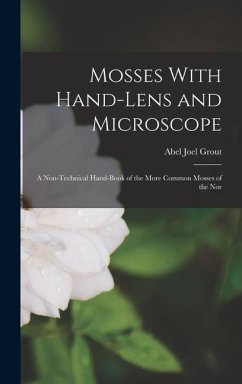
The Daily March of Transpiration in a Desert Perennial
Versandkostenfrei!
Versandfertig in über 4 Wochen
28,99 €
inkl. MwSt.
Weitere Ausgaben:

PAYBACK Punkte
14 °P sammeln!
"The Daily March of Transpiration in a Desert Perennial" (1914) by Edith Bellamy Shreve presents a detailed scientific study of transpiration rates in a desert plant species. This work contributes to the fields of botany and plant physiology, offering valuable insights into the adaptations of desert flora to arid environments. Shreve's research meticulously documents the daily fluctuations in transpiration, providing a foundational understanding of plant water relations in extreme conditions. This historical scientific document is relevant to researchers and students interested in plant ecolog...
"The Daily March of Transpiration in a Desert Perennial" (1914) by Edith Bellamy Shreve presents a detailed scientific study of transpiration rates in a desert plant species. This work contributes to the fields of botany and plant physiology, offering valuable insights into the adaptations of desert flora to arid environments. Shreve's research meticulously documents the daily fluctuations in transpiration, providing a foundational understanding of plant water relations in extreme conditions. This historical scientific document is relevant to researchers and students interested in plant ecology, environmental science, and the history of botanical research. This work has been selected by scholars as being culturally important, and is part of the knowledge base of civilization as we know it. This work was reproduced from the original artifact, and remains as true to the original work as possible. Therefore, you will see the original copyright references, library stamps (as most of these works have been housed in our most important libraries around the world), and other notations in the work. This work is in the public domain in the United States of America, and possibly other nations. Within the United States, you may freely copy and distribute this work, as no entity (individual or corporate) has a copyright on the body of the work. As a reproduction of a historical artifact, this work may contain missing or blurred pages, poor pictures, errant marks, etc. Scholars believe, and we concur, that this work is important enough to be preserved, reproduced, and made generally available to the public. We appreciate your support of the preservation process, and thank you for being an important part of keeping this knowledge alive and relevant.












